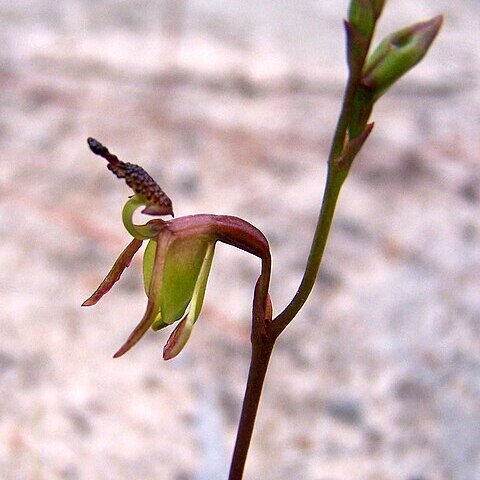Plant at fl. c. 5–20cm. tall. Stem very slender, smooth. Lf very narrow linear, much shorter than stem. Per. greenish except for deeply coloured labellum. Dorsal sepal to 8 mm. long, linear-spathulate; laterals similar but adnate basally to long column-foot. Petals little shorter. Labellum-claw broad and smooth, curved with its convexity towards column, lamina "produced on the columnar side into a bifid gland-tipped appendage, and at the other end into a triangular pointed process with a spur on each side; centre inflated and hollow; upper surface and margins tuberculate except at the base." Column almost as long as petals, its long foot and broad petaloid wings forming together an upwardly opening cup.

